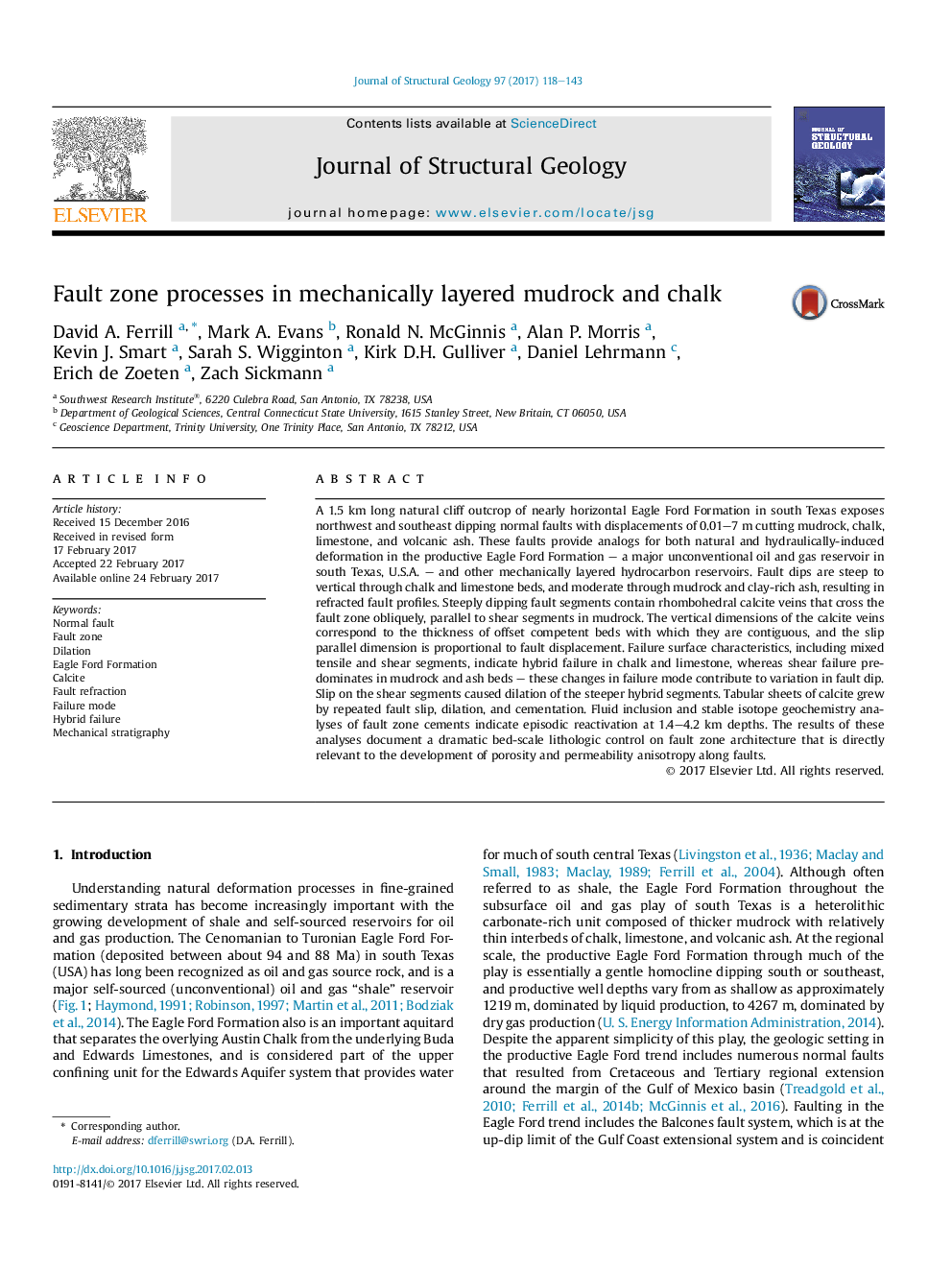| کد مقاله | کد نشریه | سال انتشار | مقاله انگلیسی | نسخه تمام متن |
|---|---|---|---|---|
| 5786342 | 1640483 | 2017 | 26 صفحه PDF | دانلود رایگان |
- Normal faults cutting mudrock and chalk of Eagle Ford Formation were studied.
- Fault dips are steep in chalk and moderate through mudrock, resulting in refracted fault profiles.
- Steep segments dilated and cemented with calcite that connects across most fault zones.
- Faults are product of hybrid failure in chalk and shear failure predominates in mudrock.
- Deformation occurred at 1.4-4.2Â km depths, with increasingly open fluid communication.
A 1.5Â km long natural cliff outcrop of nearly horizontal Eagle Ford Formation in south Texas exposes northwest and southeast dipping normal faults with displacements of 0.01-7Â m cutting mudrock, chalk, limestone, and volcanic ash. These faults provide analogs for both natural and hydraulically-induced deformation in the productive Eagle Ford Formation - a major unconventional oil and gas reservoir in south Texas, U.S.A. - and other mechanically layered hydrocarbon reservoirs. Fault dips are steep to vertical through chalk and limestone beds, and moderate through mudrock and clay-rich ash, resulting in refracted fault profiles. Steeply dipping fault segments contain rhombohedral calcite veins that cross the fault zone obliquely, parallel to shear segments in mudrock. The vertical dimensions of the calcite veins correspond to the thickness of offset competent beds with which they are contiguous, and the slip parallel dimension is proportional to fault displacement. Failure surface characteristics, including mixed tensile and shear segments, indicate hybrid failure in chalk and limestone, whereas shear failure predominates in mudrock and ash beds - these changes in failure mode contribute to variation in fault dip. Slip on the shear segments caused dilation of the steeper hybrid segments. Tabular sheets of calcite grew by repeated fault slip, dilation, and cementation. Fluid inclusion and stable isotope geochemistry analyses of fault zone cements indicate episodic reactivation at 1.4-4.2Â km depths. The results of these analyses document a dramatic bed-scale lithologic control on fault zone architecture that is directly relevant to the development of porosity and permeability anisotropy along faults.
Journal: Journal of Structural Geology - Volume 97, April 2017, Pages 118-143
